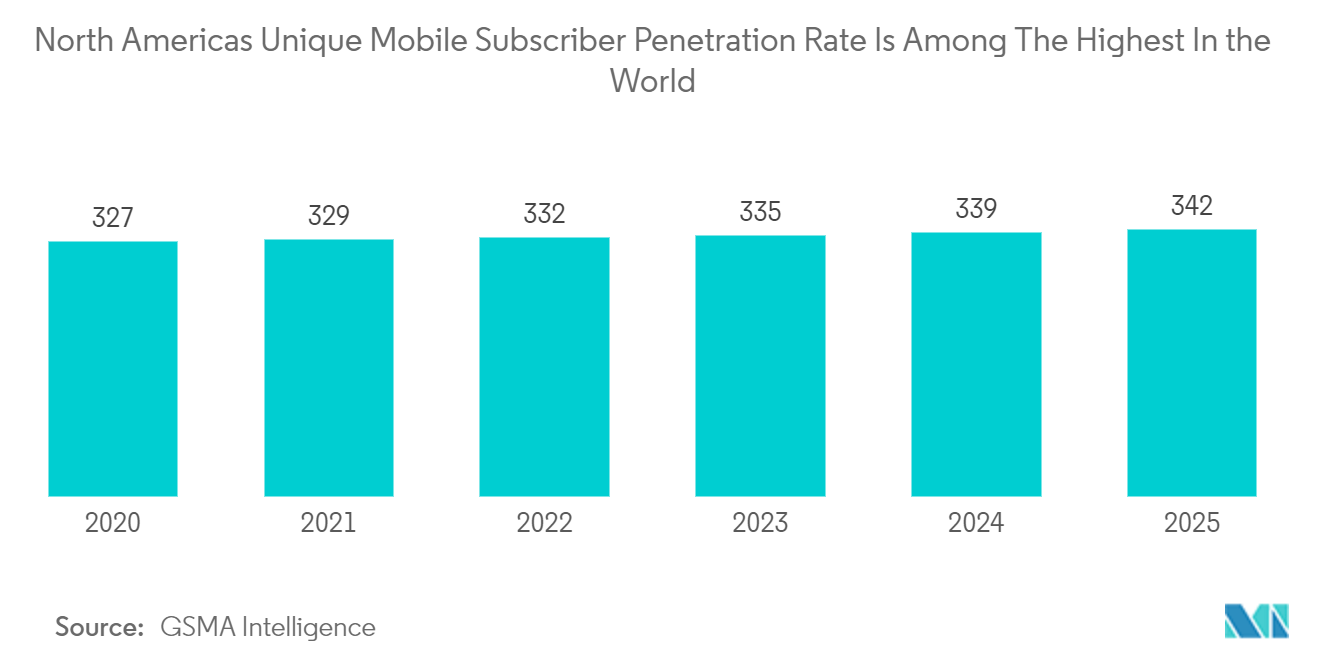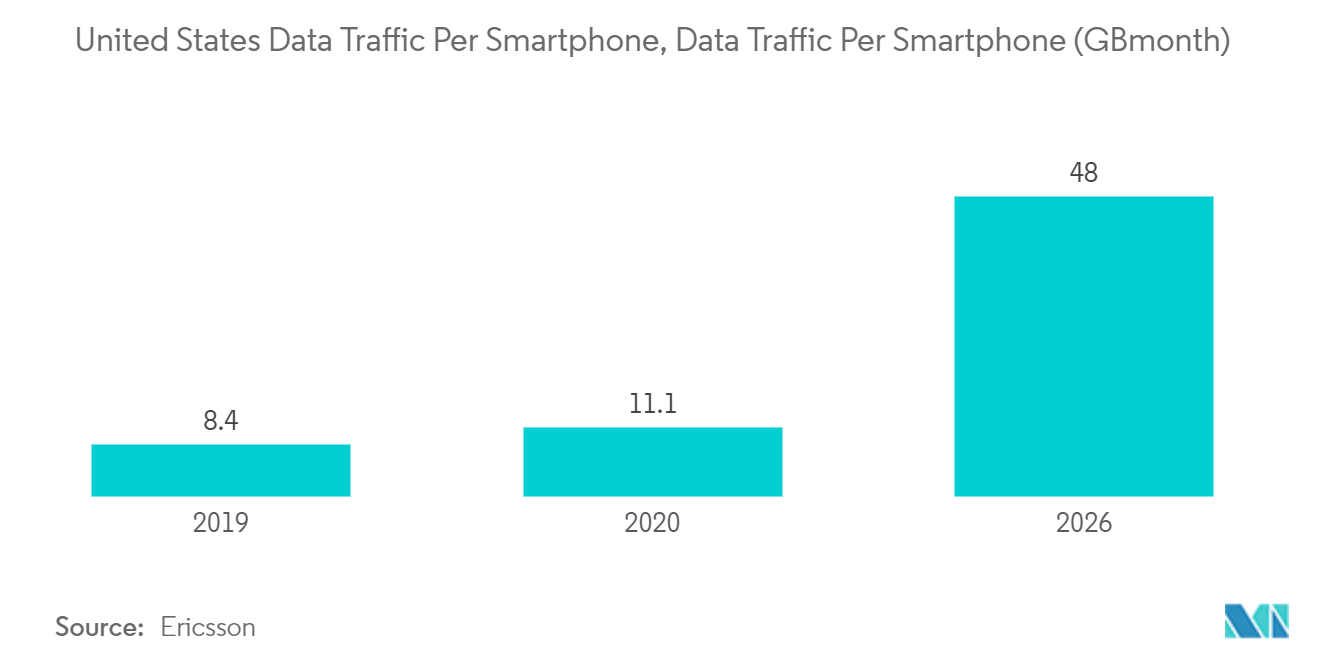Market Trends of North America Food Platform-to-Consumer Delivery Industry
Rise of Mobile Penetration in North America
- The trend of online food ordering has been increasing in North America. One of the major driving factors would be the rising penetration of smartphones and internet connections in the region, which provide the opportunity to get food delivered very conveniently and quickly. Online food delivery offers consumers a wide range of food items on their smartphones and the convenience of getting them delivered at their doorsteps.
- Moreover, online food delivery companies provide numerous benefits to food service providers, one of the advantages of online food delivery is low labor requirements. Along with labor savings, other uses of online food delivery for foodservice providers include the increased convenience for the guest, accuracy of online orders, and simpler order processing.
- Online food ordering provides food service providers with key customer information and insights that can be useful for making promotional strategies, such as targeted promotions designed to create off-peak demand, specials targeted at particular customer segments, and couponing strategies.
- The rising penetration of the internet and the surging number of smartphone users represent the primary factors driving the market in North America. Besides this, the escalating demand for ready-to-eat (RTE) foods on account of the expanding working population is another major growth-inducing factor. Additionally, there has been widespread adoption of online food delivery services amid the recent coronavirus disease (COVID-19) outbreak due to stringent lockdown regulations and social distancing norms across the North American region. In line with this, owing to busy lifestyles, rapid urbanization, and lack of domestic help, the shifting inclination toward online food delivery, especially among the young population, has augmented the demand for online food delivery options.
- Furthermore, several key players are adopting innovative food delivery methods, including self-driving cars, drones, and robots, for enhanced convenience, safety, and cost-effectiveness. Along with this, recent technological advancements, such as integrating online food delivery platforms with the internet of things (IoT), artificial intelligence (AI), and predictive and big data analytics to offer a more personalized experience, have catalyzed the market growth. Other factors, including the rising popularity of cloud kitchens, elevating living standards, inflating consumer expenditure capacities, and availability of attractive discounts and offers on delivery platforms, are also a positive thrust to the market growth.

Surge in Use of Internet Across the Region
- Despite relaxed lockdown restrictions and many restaurants opening up for the dine-in experience, consumers have maintained the habit of placing orders through food delivery apps in 2021, with revenue projected to reach new heights in United States markets globally. Adjust's data reflects this, showing a consistent upward trend in growth for food and drink delivery apps, with no signs of slowing down. Global installs increased by 25% in 2020 compared to 2019 and are up by a further 21% in 2021. In the United States, the 2020 boost hit 30% and is up another 10% in 2021.
- The most successful food delivery apps offer customers a website that can be used in unison with their mobile app to ensure an optimal user experience. Users can log in via their desktop and in-app, enabling them to use your services in whichever way best suits them. For example, Uber Eats and JustEat both advertise their mobile apps with large panels on their landing page, with Just Eat suggesting that users download their app 'for faster ordering and more personalized recommendations.'
- Email marketing is a successful marketing method in the US that can help you connect with users. According to HubSpot, "more than 50 percent of US respondents check their email account more than ten times a day, and it is their preferred way to receive brand updates". Email marketing successfully reaches out to customers because users have to opt-in and actively show interest in receiving emails related to the brand app. Brands can use email marketing to reward users with promotional deals, building brand loyalty and incentivizing users to return to the company's app. Food Delivery brands can also send subscribers newsletter updates which is another way to share blog content and encourage users to follow them across their social media channels.
- Developing loyalty programs, offering coupons or digital stamp cards, or investing in gamification are a few additional methods that can be leveraged into successful user acquisition and retention strategies in the food delivery app vertical. The food delivery app vertical continues growing and evolving as markets take shape in a post-pandemic world. To thrive, apps must partner with the restaurants and vendors that best suit their users' needs and find clever ways to incentivize continued use in this more competitive-than-ever space.

